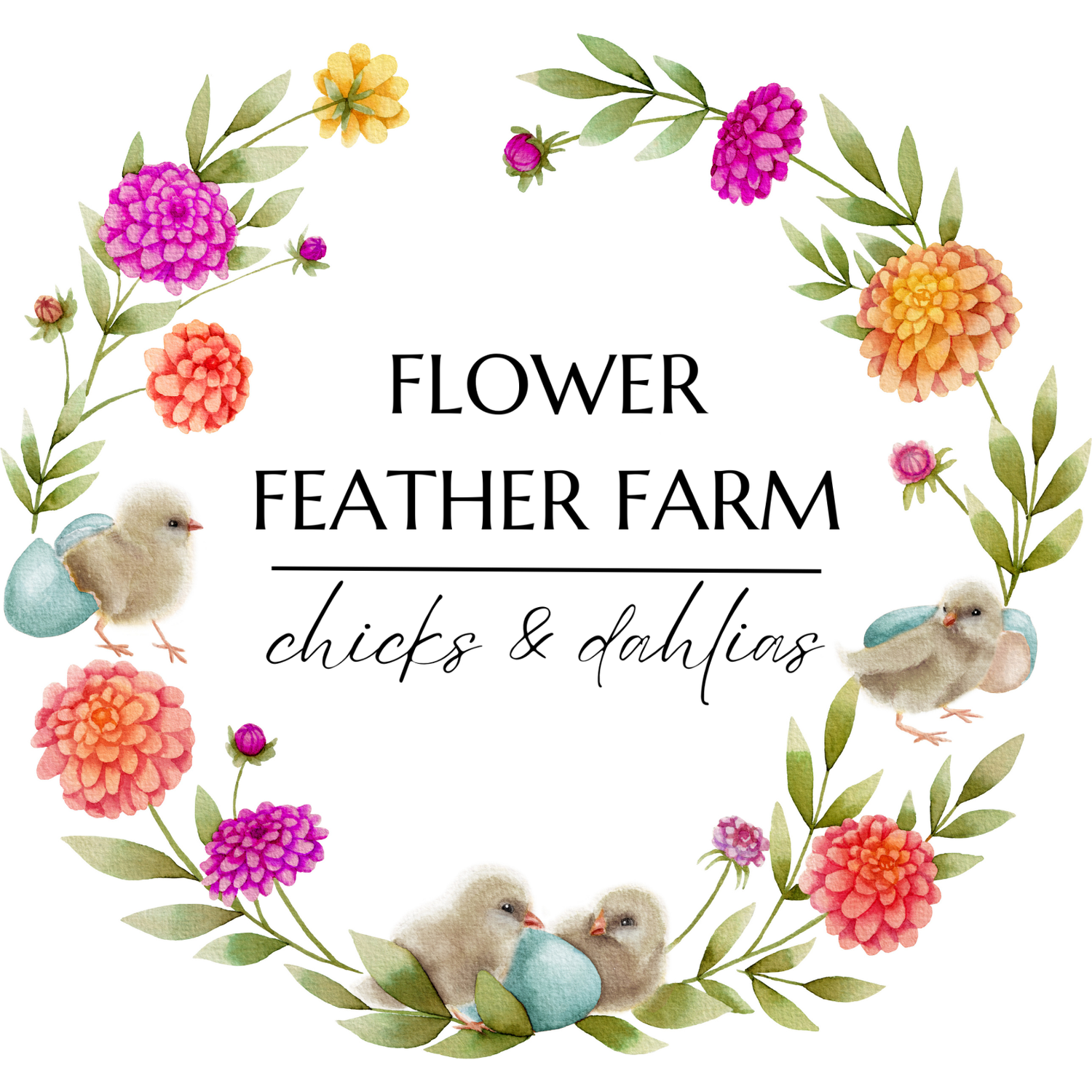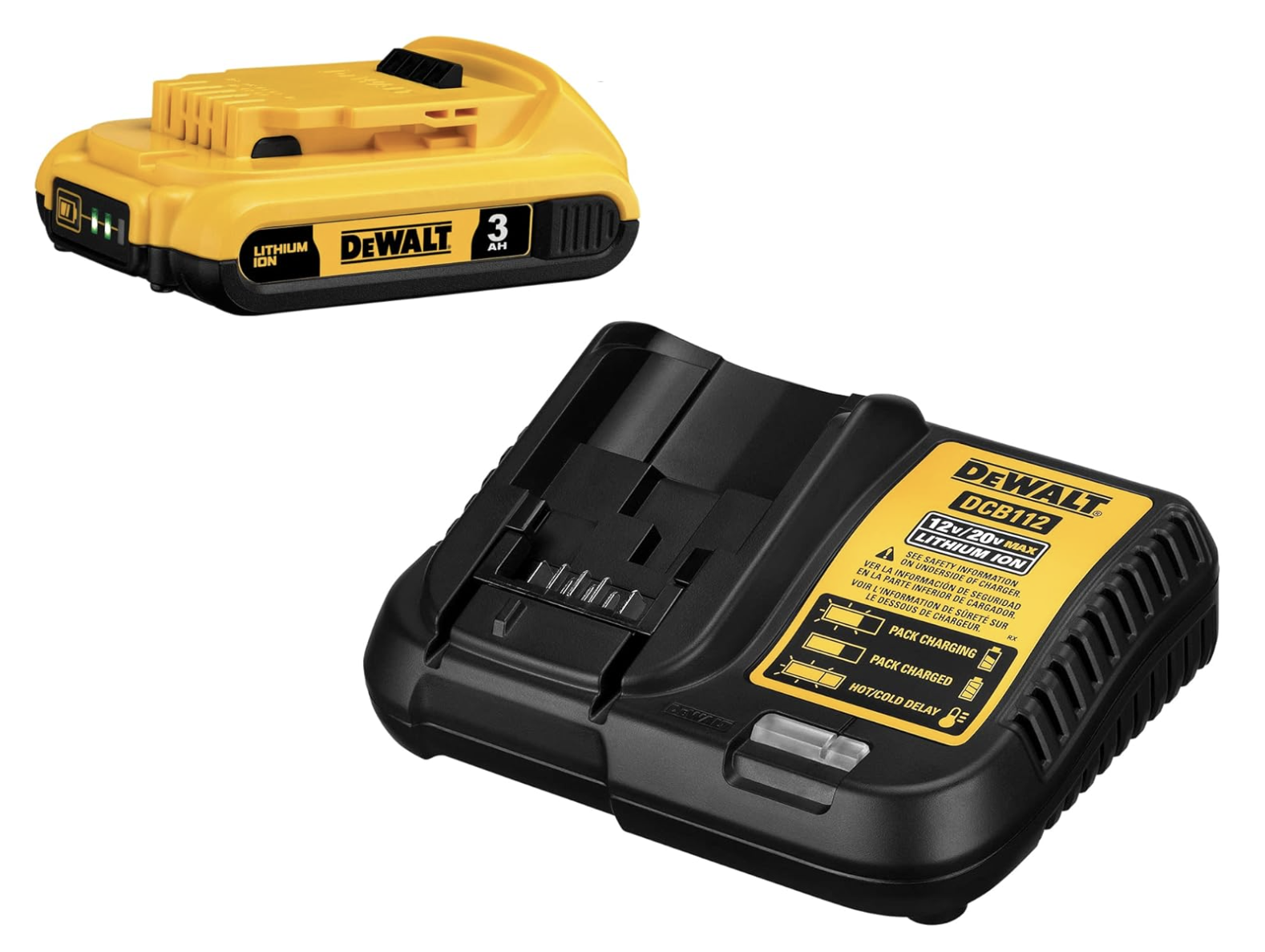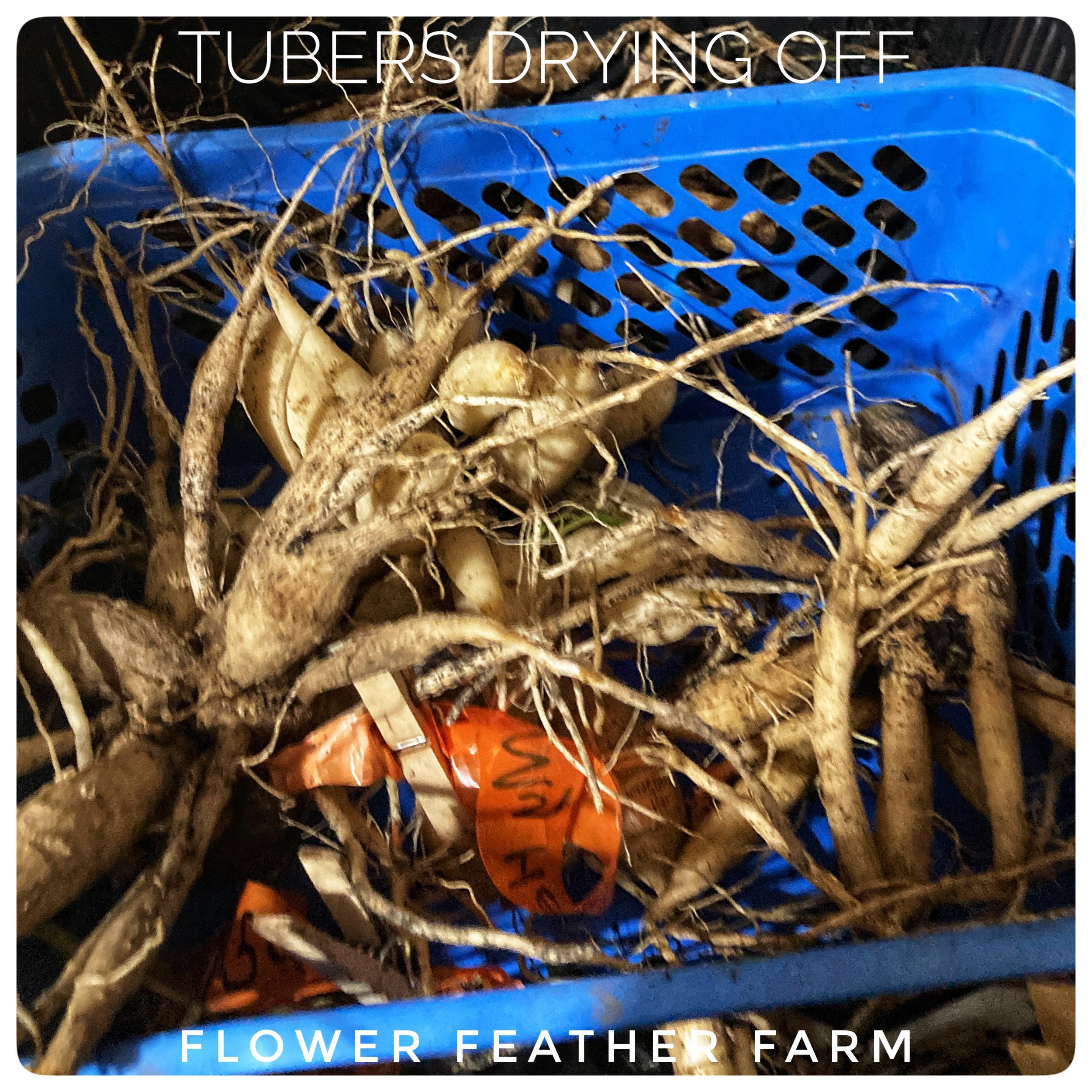Tips & Tools for Lifting & Cleaning Dahlia Tubers
It’s time to start thinking about lifting up our tubers and getting ready for the storage season. This can be done at anytime after the 120th day of the tubers being in the ground, but I like to wait until about a week after the first frost.
De-leafing
The first step is to de-leaf and label the stalks. We de-leaf the lower part of each plant to allow for air circulation as we enter the rainy season.
I would not even try to de-leaf without my faithful garden stool. I am far too old and creaky to be stooping and squatting and crawling, so I sit on this and when it is time to move forward, I stay seated, grab it, and hop forward a bit. I am sure I look ridiculous, but it works for me. Besides, the dahlias grow so thickly, no-one can see me — at least that is what I tell myself.
Labeling the Dahlia Clumps
If you want to know which tuber is which next season, you will want to tag the stalks now; if you wait until after first frost, everything will be mushy and hard to identify. Plus it will probably be cold and wet, so why not do the task on a nice day?
We use flagging tape and sharpies to label our tubers down at the base right after de-leafing them as we are there anyway and we can now easily access the base of the stalks.
I like to use these Garden Markers (all these links are affiliate links; if you order, I make a wee commission — just want to be upfront about that) or Industrial Sharpies, but an ordinary Sharpie will do in a pinch. Write the name of the dahlia tuber on the flagging tape and attach it to the base of the plant. I like to tie it with a bow or use a clothespin so that when I lift the clump, the tape is easy to reposition.
“Use three different colors of flagging tape for Short, Medium, and Tall so that you can plant accordingly next year.”
Cutting Back the Plants
In most climates, you wait for the first frost to kill your plants which signals to the tubers that this is their last chance to get ready for winter — this is what I prefer to do, letting them cure in the ground for about a week after the frost.
The 2022 cutting. We didn't wait for a freeze, as we had help available and wanted to make the most of it.
However, where we live, it rains a lot, so I do have to balance the benefits of curing in the ground against the risk of rot. Either way, when we cut them , we cut down about 4 inches above the ground and then let them hang out in the dirt for a few days.
The right handtools make this job so much easier. I like to alternate between these two to avoid hand-fatigue — old hands, loads of arthritis (zero stars: do not recommend).
Ratchet Pruners — they gear up for thicker stalks.
Felco Loppers — they allow me to reposition and work from a different angle, reducing pressure on joints etc.
And if my hands are really bad, I borrow my husband’s Dewalt Electric Pruner, which is one of our favorite tools ever. If you go this route, don’t forget you will need to order a battery and a charger.
Lifting the Dahlia Tubers
Our soil is fluffy and light, so I don’t need a heavy shovel which can damage the tubers. I like to use a garden fork to lift my labelled dahlia tubers up and shake off the dirt. From there, they go into a bulb crate: one variety per crate. These bulb crates are the bomb, as they fold up nicely for off-season storage.
“Inevitably unidentified tubers will show up. Those just go into the Mystery bin and get sold as grab bags.”
Cleaning the Dahlia Tubers
If you only have a few clumps, just leave them in the bin and hose them off with a sprayer. If you have more clumps, pick up each clump from the bin, hose it off on all sides, and put it into a second bin. For this step, I find a rubber apron and waterproof boots to be essential. I also tend to put on thick medical gloves under my garden gloves to keep my hands dry.
I also like to use a dog kennel on its side to get a work surface that is the right height for me. I highly recommend you just work with one variety at a time. It is so easy to get distracted and forget which clump goes back to which bin.
Washing a huge clump of Karma Serena dahlia tubers
“If it is cold out, put on a pair of medical gloves underneath your garden gloves to keep your hands dry. You may also want rubber overalls and rubber overalls depending on your climate and personal tolerance for being damp and cold.”
Drying the Dahlia Tubers
If your weather permits it and if you are home to check on them often, just leave the bins out in the sun and the wind to dry for about a day prior to putting the tubers into storage. Otherwise, spread the bins out on a table and set a fan on them overnight. I put old baking racks under the bins to make sure there is not dampness lurking in the bottom.
You want them dry enough to not be carrying rot-inviting moisture into storage, but not so dry that they start to shrivel. Of the two, shriveling is better than rotting, as I have grown sumptuous plants from dessicated tubers. Nothing will grow from a rotten tuber.
A small tub of drying tubers.
That’s it for today. Check in later this week for a 2024 update to 2022’s Tips and Tools on Dividing and Storing Dahlia Tubers.
Originally posted October of 2022, revised and updated October of 2024.





















